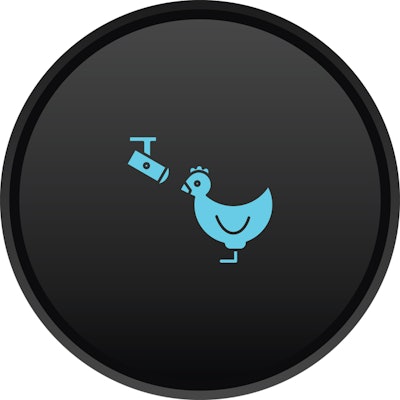
The rise of cage-free and free-range egg systems is giving hens greater opportunities to express their needs and behaviors, and new technologies are giving us the opportunity to better understand them. While some of this technology may, at first sight, seem somewhat alien, it is, in fact, already present in many of our homes.
In video games, for example, the need for more realistic real-time action has led to the development of high performance central processing units (CPUs) and graphic processing units (GPUs). The CPU updates what happens in the game, such as the position and movements of objects and the sounds to play. Once the CPU has calculated everything, the GPU can play the game scenes, conducting massive parallel computations.
Why mention video games? Well, because the great power and instant computing performance derived from these new generations of GPUs is now being used for the good of laying hens.
Now that hens have free access to perches, nest boxes, feeding areas, water lines and the open range, evaluating their needs and behaviors has become more complex. We also know that direct human observation will affect bird behavior.
Radio-frequency identification devices (RFIDs) are now commonly used to monitor hen movement inside and outside the barn. When combined with 3D vision cameras, we can now analyze birds carrying out their various activities.
Finding the needle in the haystack
However, as may be expected, obtaining a clear view of one individual bird in a dimly lit barn full of housemates is extremely difficult.
Scientists have used optical flow analysis techniques or motion estimation algorithms to detect and delineate independently moving individuals. These techniques are rather complex from a calculation standpoint and require fast CPUs/GPUs and great software.
Researchers at Australia’s University of New England recently used a wide range of these new techniques to analyze hen movements inside and outside free-range barns. The recording of every second of the lives of 9,375 hens from 16 to 72 weeks of age generated over 1.6 billion records. This is truly an example of Bid Data!
Using the full computing power available, and artificial intelligence with deep learning models, the research team identified different hens clusters, some willing to go outside while others preferred to stay inside. From the data, we will be able to optimize the location and use of resources, such as nest boxes and feeders, improving both production efficiency and overall hen welfare.
Using this recently available computing and analytical power, precision livestock farming is making the most of sensors and artificial visual systems to displace subjective human observations.
The use of digital twins is another application derived from big data generated by sensors, vision systems and other connected devices. A digital twin replicates a real-world entity, simulating its physical and, potentially, its biological status and behavior based on constant access to large amounts of real-time data.
Digital twin technology is already used in various fields, for instance in the automobile industry or fast moving consumer goods manufacture, to improve efficiencies, reduce costs or scale-up production.
In the egg sector, digital twins could replicate, in real time, the emotions and behaviors of hens in a barn, instantly predicting undesired behaviors such as feather pecking or cannibalism. Digital twin technology could also assist in genetic selection, balancing welfare traits and welfare.

















